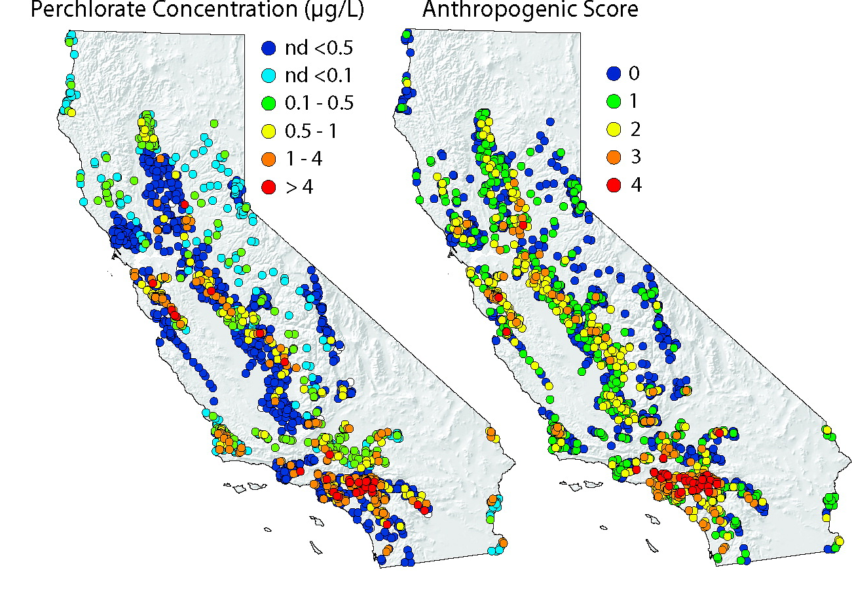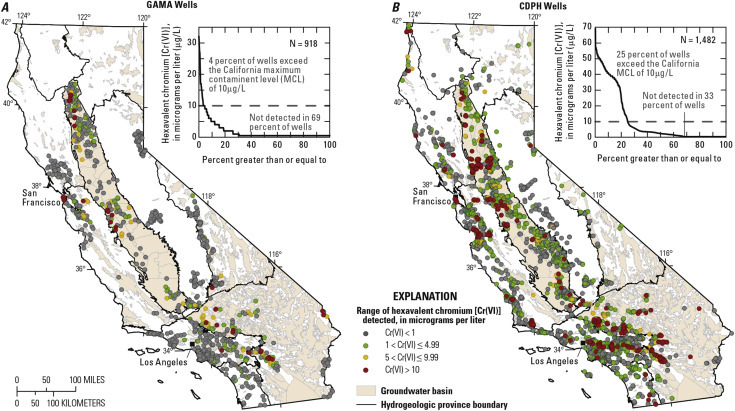What We're Learning
Perchlorate and Chromium--Constituents with Both Natural and Anthropogenic Sources
Perchlorate
Under the GAMA-PBP, Fram and Belitz, (2011) conducted a detailed analysis of perchlorate in California's groundwater to help water resource managers determine whether observed perchlorate concentrations are likely to be the result of natural processes. The California MCL for perchlorate is 6 µg/L. The GAMA-PBP study:
- presented a model for predicting perchlorate concentrations based on climate, anthropogenic influence on groundwater quality, and flow patterns altered by irrigation
- concluded the likelihood of detecting perchlorate concentrations above 0.1 µg/L in arid zones is 50-70%
- in the wettest areas of California, generally not considered to be places where perchlorate is naturally found in groundwater, the likelihood of detecting perchlorate concentrations above 0.1 µg/L is 5-15%
- high concentrations of perchlorate above 1 µg/L were almost never the result of natural conditions

Hexavalent Chromium (Cr(VI))
Hexavalent chromium (Cr(VI)) is another constituent that occurs naturally in groundwater as well as being a common contaminant related to industrial processes. The California MCL is 10 µ/gL. Information collected as part of a regulatory program by the SWRCB Division of Drinking Water (DDW) seemed to indicate problems with Cr(VI) concentrations were widespread in groundwater resources used for public supply in 2011 and the GAMA-PBP undertook a detailed analysis to help determine whether this was true. The study (Izbicki and others, 2015) found that the data collected for regulatory purposes did indeed overestimate Cr(VI) occurrence in the groundwater resource (Figure 2.).

Additionally, the study reported:
- Cr(VI) concentrations in 4% of sampled wells exceed the California MCL of 10 µg/L
- Known geologic, hydrologic, and geochemical conditions control the occurrence of Cr(VI), which is greater in alkaline, oxic groundwater
- Cr(VI) can be mobilized from the unsaturated zone into the groundwater by irrigation.

